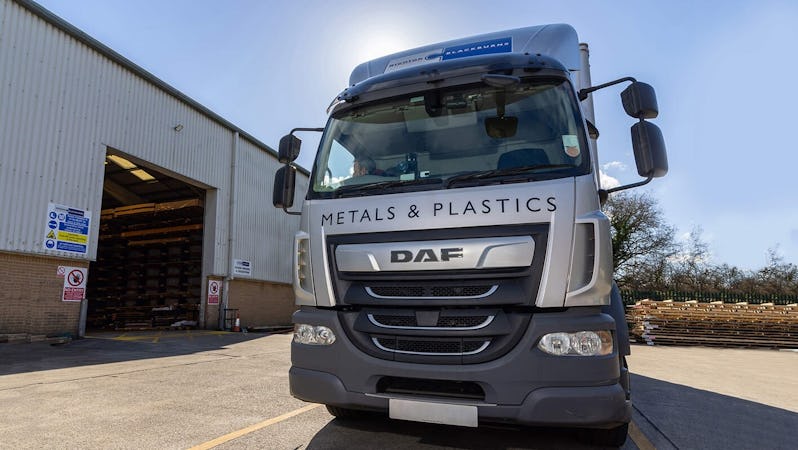Finishing
Although stainless steels have excellent corrosion resistance, and are often selected for this property, proper finishing is required to maintain it. After any fabrication process that alters the surface condition of the material, the stainless steel needs to be degreased, cleaned and finished appropriately.
Finishing methods may include one or more of the following:
Pickling
Pickling uses an acid or mixture of acids to remove scale produced in high temperature operations like welding, heat treatment or hot working. Acids and procedures depend upon the grade of stainless steel being treated. A great deal of care must be taken during the pickling process and with disposal of the waste as the acids used include sulphuric acid, nitric acid and hydrofluoric acid.
Pickling also removes rust due to corrosion of the stainless steel or corrosion of contaminant iron and steel particles.
The scale is removed as it retards the corrosion resistance of the underlying stainless steel.
Pickling is commonly done using baths or “Pickling Paste”. Pickling paste is a specially prepared stiff paste of strong acids. In this form it can be applied to vertical or overhanging surfaces and localised areas. Pickling paste is often employed to remove post-weld discolouration.
These are strong acids and appropriate caution must be taken when handling them. The same applies with acids used in passivation.
Passivation
Passivation is a process used to remove any free iron contamination of the stainless surface. Iron in the form of elemental iron, cast iron, carbon steel, mild steel or other non-stainless alloys can cause problems with stainless steels. This material is normally deposited from tools or work surfaces during fabrication. The iron particles promote corrosion on the surface of the stainless steel. At it’s mildest form, the discolouration caused can be unsightly. More serious corrosion is isolated pitting corrosion at the point of contamination. Passivation involves treatment of the stainless steel with nitric acid or a nitric acid and sodium dichromate combination to remove the iron contaminants.
Grinding
Stainless steels are readily polished and ground if standard techniques are slightly modified. A build up of material on abrasive media occurs due to the high strength of stainless steels. Low thermal conductivity means that there is also a build up of heat. The result can be heat tinting of the surface of the material.
Using low grinding and feed speeds combined with specifically selected lubricants and grinding media can alleviate these complications.
Corrosion resistance of stainless steels tends to increase with the extent of surface polishing.
Electropolishing
The reverse of electroplating is electropolishing. This is an electrochemical process that removes the peaks of the rough surface of a metal. Electropolishing smooths the material surface making it brighter.
The resultant finish is very corrosion resistant, hygienic and attractive. On some stainless steels the surface finish appears frosted rather than smooth and reflective.
Blackening
Occasionally a highly polished surface is not wanted for stainless steel. In this case blackening is used to produce a non-reflective black oxide surface. Several methods can be used to achieve this finish.
Some treatments are proprietary but two common methods are immersion in a solution of sulphuric acid and potassium dichromate solutions or immersion in a molten salt bath of sodium dichromate.
Mechanical Polishing
Any mechanical polishing procedures must be carefully done to ensure contamination by iron based materials doesn’t occur.
Sand blasting must be done with clean silica or garnet sand. Shot, grit and cut wire blasting must use stainless steel media of equal or greater corrosion resistance than the metal being cleaned. Barrel and vibratory finishing are often used to polish fittings and small parts.
Light heat tint can be removed by wire brushing but the brushes must be stainless steel and never be used on other materials.
Mechanically cleaned parts are not as corrosion resistant as pickled stainless steel. This is due to mechanical cleaning not removing all the chromium depleted material from the surface and the retention of some scale residue. Mechanical cleaning is often used to prepare the surface of stainless steel before pickling.
Colouring
Stainless steels can be given a range of surface colours for architectural applications. These colours include bronze, blue, gold, red, purple, black and green. A range of shades can also be produced.
The colouring is done by a proprietary process that involves immersing the stainless steel in a hot chromic/sulphuric acid solution. This is followed by a cathodic hardening treatment in another acidic solution. The base material reacting with the hot acid produces a transparent film. Although the film is colourless, light interference imparts a colour to the layer. If the underlying metal surface is highly polished the effect will be a strong metallic lustre. For matt and satin finished stainless steel, the result will be a matt finish.





